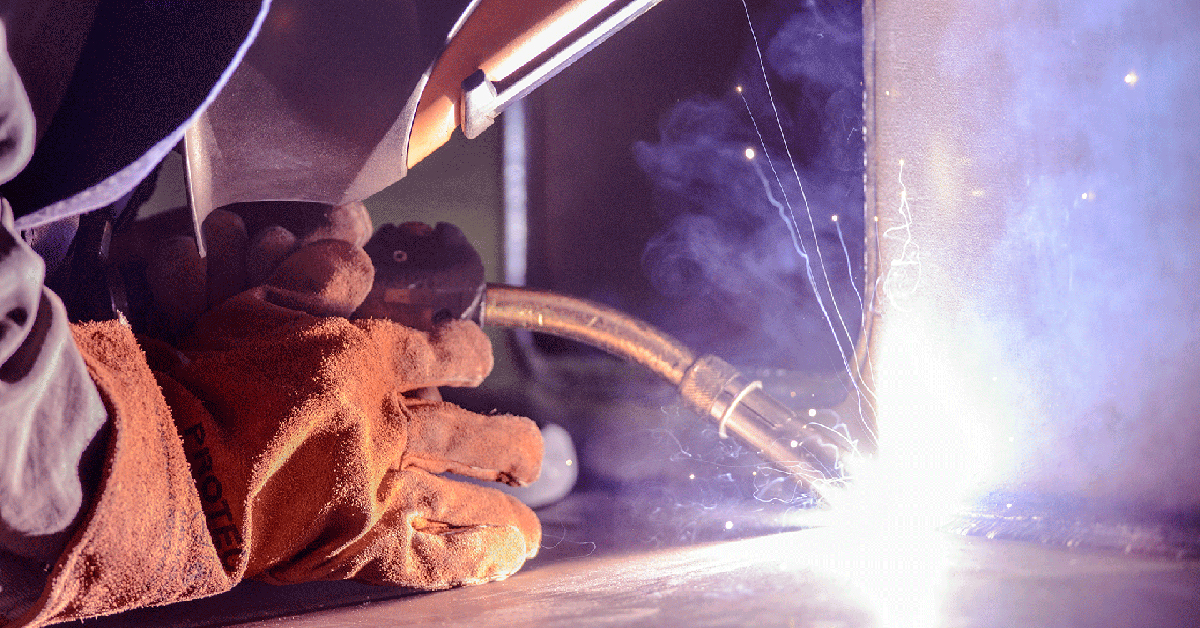Comprehending the Causes and Solutions for Undercut Welding in Metal Construction Processes
In the realm of steel fabrication processes, the incident of undercut welding presents a substantial obstacle that requires a thorough understanding of its reasons and sensible options. The intricate interaction of numerous factors during welding procedures can bring about this unwanted phenomenon, influencing the structural stability and general high quality of the bonded joints - Preventing weld undercut. By dissecting the origin of undercut welding and discovering effective therapeutic procedures, fabricators can raise the requirement of their workmanship and ensure the production of perfect steel elements
Typical Causes of Undercut Welding
Frequently forgotten in steel manufacture, undercut welding occurs because of numerous aspects that require meticulous attention and experience to be properly alleviated. One common source of undercut welding is too much warm input. When the warm input is expensive, it can result in the melting and succeeding erosion of the base material along the edges of the weld joint, producing a groove or undercut. Additionally, incorrect welding methods, such as making use of the incorrect welding angle or travel rate, can additionally add to damage formation. Poor securing gas insurance coverage is an additional crucial element that can cause damaging. Insufficient gas protection stops working to protect the weld pool sufficiently, resulting in oxidation and undercut defects. Additionally, the option of welding criteria, such as voltage, existing, and wire feed speed, plays a considerable function in the incident of undercut welding. Comprehending these common causes is important for implementing preventive measures and guaranteeing top quality welds in metal manufacture procedures.
Effect of Incorrect Welding Parameters
Imprecise welding specifications can substantially jeopardize the honesty and top quality of bonded joints in metal construction procedures. The effect of inaccurate welding parameters materializes in various ways, causing structural weaknesses and flaws in the welded elements. One essential element affected by inappropriate welding parameters is the infiltration deepness of the weld. Not enough warm input as a result of reduced welding currents or excessively high travel rates can cause insufficient fusion between the base steels, causing incomplete joint infiltration and damaged bonds. Alternatively, extreme heat input brought on by high welding currents or sluggish travel rates can cause excessive and burn-through reinforcement, developing a breakable and unstable weld framework. Furthermore, incorrect criteria such as incorrect voltage setups or inaccurate electrode angles can contribute to unpredictable weld bead profiles, absence of fusion, and raised possibilities of issues like undercutting. Therefore, careful attention to welding criteria is critical to ensure the manufacturing of premium welds with the desired mechanical properties and architectural honesty.
Result of Improper Torch Angle
Incorrect torch angle in welding operations can considerably impact the top quality and honesty of the last weld joints in metal fabrication processes. Damaging is a typical welding issue where a groove develops along the weld toe, deteriorating the joint and jeopardizing its structural honesty.
A lantern angle that is also high can cause inadequate penetration, incomplete fusion, and raised spatter. On the various other hand, a torch angle that is too superficial can lead to extreme penetration, burn-through, and distortion of the base product. Preventing weld undercut. Appropriate torch angle is important for ensuring regular weld high quality, strength, and look
To stop undercutting and various other flaws triggered by improper lantern angles, welders need to be trained to keep the appropriate lantern angle throughout the welding procedure. Regular surveillance and modification of lantern angles during welding can aid accomplish audio welds with marginal problems.
Duty of Inadequate Welding Methods

One more element of insufficient welding methods is incorrect weld preparation. Inadequate cleaning of the base steels, wrong joint layout, or not enough side preparation can all add to undercut welding. Preventing weld undercut Moreover, poor securing gas insurance coverage or making use of the incorrect kind of gas can result in insufficient blend and the development of undercut problems.
To resolve the function of insufficient welding techniques in steel fabrication procedures, it is important to give detailed training for welders. Appropriate education on welding criteria, joint preparation, and securing gas choice can help protect against undercut welding and make sure premium welds in metal manufacture jobs.
Effective Solutions for Undercut Welding
Resolving undercut welding in metal fabrication needs implementing reliable services to boost weld high quality and architectural stability. Among the main services to deal with undercut is to adjust welding specifications such as voltage, existing, and travel rate to guarantee appropriate warm input and fusion. By fine-tuning these setups, welders can avoid extreme melting of the base steel and filler material, minimizing the possibility of undercut development.
Additionally, appropriate joint prep work is important in protecting against undercut. Guaranteeing tidy base metal surfaces free of pollutants and making use of the appropriate bevel angle can assist advertise better weld penetration and minimize the threat of undercut - Preventing weld undercut. Employing appropriate welding methods, such as weaving or oscillating the torch, can additionally assist in distributing warmth evenly and filling the weld joint appropriately, minimizing the possibility of undercut flaws
In addition, selecting the appropriate welding consumables, including electrodes and filler metals, is essential in reducing undercut. Utilizing products with ideal chemical compositions and mechanical properties can contribute to achieving sound welds with minimal undercut. Regular evaluation and high quality control procedures need to likewise be carried out to find and resolve undercut concerns without delay, making certain the total honesty of made steel elements.

Final Thought
In final thought, comprehending the causes and services for undercut welding see in metal fabrication procedures is critical for attaining high-grade welds. By resolving typical causes such as incorrect welding criteria, inappropriate lantern angle, and inadequate visit homepage welding strategies, welders can protect against damaging and make sure strong, durable welds. It is necessary to take notice of these aspects and execute effective remedies to enhance the overall welding procedure and end product quality.
